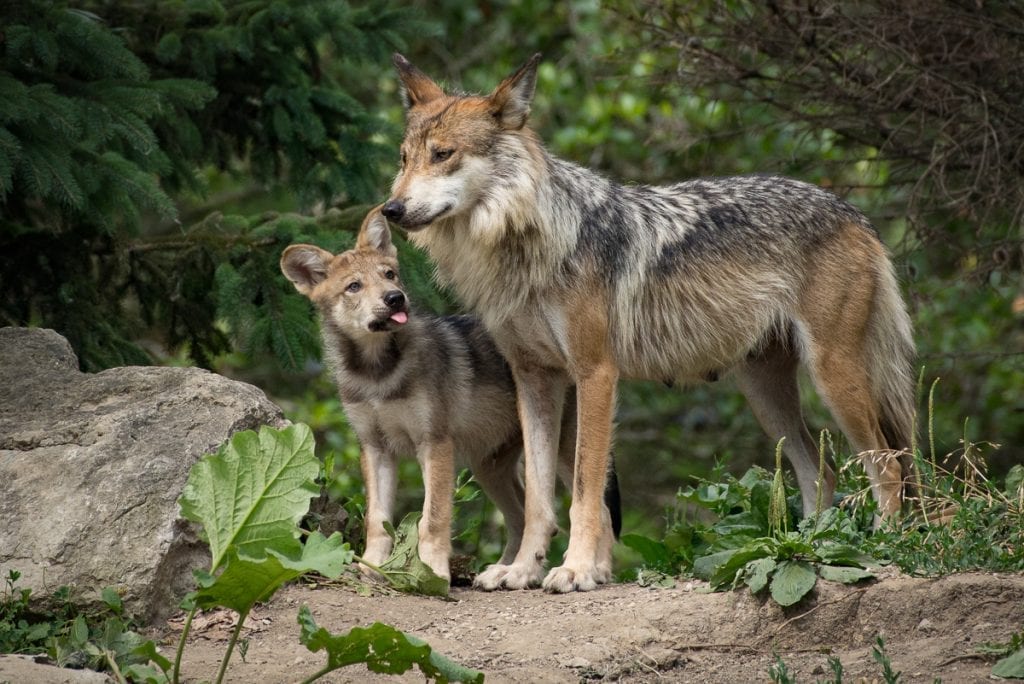Current work in wildlife, rivers, public lands, and climate
Press Releases
Conservation groups celebrate record Mexican wolf population but caution against using numbers alone to measure recovery
TUCSON, Ariz.– While applauding the record-breaking Mexican wolf population announced today by the U.S. Fish and Wildlife Service (“Service”), conservation groups noted that, with lobos, it is not just the total numbers that matter. Though 241 wild lobos is a sign of progress for the program, and a 23 percent increase over last year is remarkable, the genetic diversity of the wild population still needs improvement. Moreover, there are indicators that lobos need more room to roam beyond the Mexican Wolf Experimental Population Area.
“The Service did well by keeping wolves in the wild last year, which surely helped increase the population,” said Greta Anderson, deputy director of Western Watersheds Project. “If the wildlife management agencies and the states would drop their opposition to adult and family pack releases, we could also help improve the genetics of the free-roaming lobos, which they desperately need.”
The 2022 year-end count found at least 136 lobos in New Mexico and 105 lobos in Arizona distributed across 59 packs. The 2021 count of 196 had been the smallest percentage increase since reintroductions began.
“This count marks the progress of the last 25 years since wolves were first re-introduced, but there are serious warning signs pointing to a fragile population and inadequate recovery efforts,” said Chris Smith, southwest wildlife advocate for WildEarth Guardians. “We should celebrate that there are 241 lobos, but we will remain vigilant in advocating for their restoration.”
Data indicates that the genetic health of the wild population of Mexican wolves continues to decline. Lobos in the wild are, on average, as related as siblings. Wildlife advocates have continuously pushed for a better genetic rescue effort, which would entail releasing adult wolves (in family groups) from captivity. However, bowing to pressure from Arizona and New Mexico wildlife agencies, the U.S. Fish and Wildlife Service almost exclusively releases captive-born wolf pups into wild dens. These pups are not guaranteed to survive, let alone pass on their valuable genetic contributions.
“Let’s hold our celebrations until there are more wild lobos than those in captivity,” stated Michelle Lute, PhD in wolf conservation and carnivore conservation director for Project Coyote. “Before we can roll out the victory banner, we have much work to do protecting all lobos, allowing them to roam as all wild wolves should and ensuring valuable genetics persist in the population. Much suitable habitat across the Southwest –beyond the Mexican Wolf Experimental Population Area– remains empty and awaiting the return of its much-needed apex predator.”
“As the population continues to grow, we anticipate more and more wolves will follow their instincts to disperse to the abundant suitable habitat in northern Arizona and New Mexico. Now is the time to ensure the protection of wolves wherever they roam, including north of Interstate 40, and allow them to fulfill their important ecological role across our southwest landscapes” said Emily Renn, Executive Director of the Grand Canyon Wolf Recovery Project.
“We are excited to see these gains. As Lobos increase their numbers, more needs to be done to prevent illegal killings and to ensure that Lobos are able to establish additional populations in suitable habitat,” said Sally Paez, Staff Attorney for New Mexico Wild. “We must continue to advocate for policies that will allow Lobos to disperse and form new, self-sustaining populations in the wild.”
“We celebrate having over 200 lobos in the wild, but the work of protecting this fragile and critically endangered wolf is far from complete,” said Renee Seacor, carnivore conservation advocate for The Rewilding Institute. “We will continue advocating for policies that allow lobos to live truly wild lives, including dispersing outside of the experimental population area into suitable habitats across the southern Rockies to establish new populations and reclaim historical territories.”
In spite of the encouraging population count, the main threat to Mexican gray wolves continues to be human-caused mortality. Given the similarity of appearance between lobos and coyotes, mistaken identity is a common excuse for those caught killing protected lobos. Last December, 14 conservation groups petitioned the USFWS to protect coyotes in order to address this critical source of lobo mortality. A decision is expected in the coming months.
Conservationists have pledged a $40,250 reward for information leading to the arrest and prosecution of wolf poachers. Anyone with information on the death of a Mexican gray wolf should call 1-844-387-8477 or email fws_tips@fws.gov.

Mexican gray wolf and pup. Photo by Bob Haarmans.